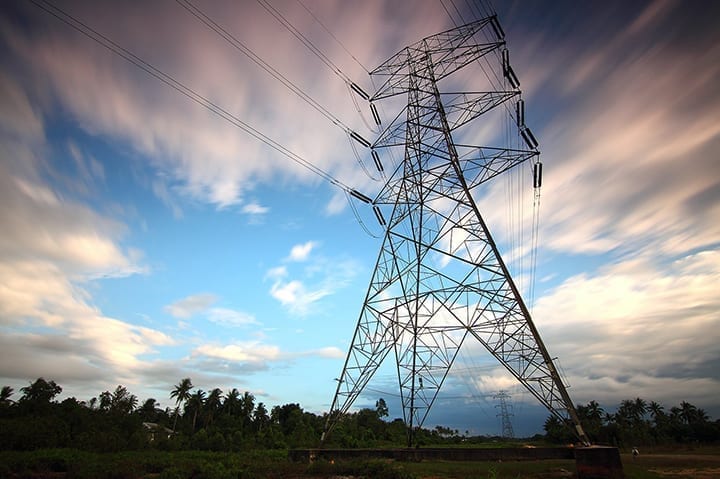Enhancing and Hardening the U.S. Power Grid
Credit to Author: Aaron Larson| Date: Tue, 03 Jan 2023 05:15:07 +0000

It’s no secret that the U.S. power grid needs some work. According to the U.S. Department of Energy (DOE), nearly 70% of the nation’s grid is more than 25 years old. The DOE says the U.S. needs to expand electricity transmission systems by 60% by 2030—and may need to triple current capacity by 2050—to accommodate the country’s growing renewable energy sector and meet increasing power demand for electric vehicles (EVs) and electric home heating.
On Nov. 18, the Biden administration, through the DOE, announced $13 billion in new financing opportunities for the expansion and modernization of the nation’s electric grid. Funded by the Bipartisan Infrastructure Law, the Grid Resilience Innovative Partnership program and the Transmission Facilitation Program together represent the largest single direct federal investment in critical transmission and distribution infrastructure ever.
“We are moving swiftly to deliver cleaner, cheaper energy to every American community by building a modern and reliable electric grid,” U.S. Secretary of Energy Jennifer M. Granholm said in the funding announcement.
What’s Being Done by Utilities
To get a better feel for what’s needed—and what’s actually being done—I spoke to Mike Edmonds, Chief Commercial Officer with S&C Electric, a 113-year-old company with global headquarters in Chicago, Illinois, that specializes in the switching, protection, and control of electric power systems. Edmonds said a lot is already being done by power companies to enhance and harden grid operations.
“We’re definitely seeing two very strong trends from the utility industry right now,” he said in his British accent, although he noted he’s lived in the U.S. for more than two decades. “One is around undergrounding. The other involves so called lateral protection or the lateral side, so as you move away from the substation toward the consumer.”
Edmonds suggested that if you went back 15 years or so, the market for undergrounding, pad-mounted gear was driven by housing starts, but today it’s been reinvigorated to improve system reliability and resiliency. He said both new and retrofitted systems are incorporating more underground and pad-mounted equipment, some replacing equipment that’s 40 years old or more.
Concerning lateral protection, Edmonds provided a simple explanation of the concept, using his own home as an example. “My personal house here in Texas has a transformer outside fed by a fuse that’s on the end of a so-called lateral or single-phase,” he said. “When we think about that part of the grid where all those revolutionary things are coming to us, such as EVs and rooftop solar, they get connected at that lateral side. We’re seeing continued adoption of technology that can actually mitigate outages from temporary faults, can rapidly rebuild the grid, can keep the grid on through a storm—we’ve seen examples of that in Florida and other places. And if devices do trip out on a permanent fault, they can quickly be put back in a very straightforward manner.”
What’s Being Done in the C&I Space
A large part of S&C’s business also comes from the commercial and industrial (C&I) sector. “We’ve seen a fairly substantial uptick in the need to provide switching and protection gear for data centers,” Edmonds said. “So, that seems to be a trend that’s strong and will continue to be strong.”
Like utilities, C&I companies are faced with supply chain issues. S&C is, of course, part of that supply chain, so Edmonds sees what companies are doing to overcome these constraints. “They’re ordering ahead and starting to get reservations in earlier,” he said. Thus, proper planning is more important than ever.
S&C has also seen an increase in purchases of equipment to support EV charging systems. “We’ve actually started to see on the medium-voltage side, which for us that’s 4,000 volts and upwards, we’re starting to see direct purchases for our equipment to put in campuses of electric infrastructure to get ready for charging needs,” Edmonds said. “Because obviously those charging needs are going to be fairly substantial.”
The growth in EVs presents significant challenges for the grid. “There’ll be an expectation from the manufacturers and buyers of electric transportation that you can simply plug your EV into the grid. So, we’re going to have to make sure the grid is ready for that. Otherwise, you’ll be pretty disappointed you bought your nice new GMC Sierra Denali EV truck, got it delivered in 2024, and realize you can’t actually find a 325-kW DC charger.”
Areas Requiring More Attention
There’s a tremendous amount of work to be done. The North American Electric Reliability Corp. (NERC) said in its 2022 State of Reliability report that there are 511,099 transmission circuit miles of greater than 100 kV. There are literally millions of miles more of low-voltage power lines and distribution transformers in the U.S. grid, and therein lies perhaps the biggest challenge to reliability and resiliency.
“I still feel that the distribution grid itself should have more attention than it’s getting,” said Edmonds. “I was part of a working group on the West Coast for EVs and their impacts on reliability of the grid, and everyone was talking about transmission, which is right to talk about, but I just asked the innocent question: Where does the EV connect to? Is it 132 kV? Is it 230 kV? No. It connects ultimately to medium voltage,” Edmonds explained.
“So, why that’s important is: to have a strong, powerful, resilient transmission grid, there’s the other piece of this, and we’ve got to continue to focus on really improving and revolutionizing the distribution grid,” he said. “So, I feel passionate that we’re still not quite talking enough about that.”
—Aaron Larson is POWER’s executive editor.
The post Enhancing and Hardening the U.S. Power Grid appeared first on POWER Magazine.